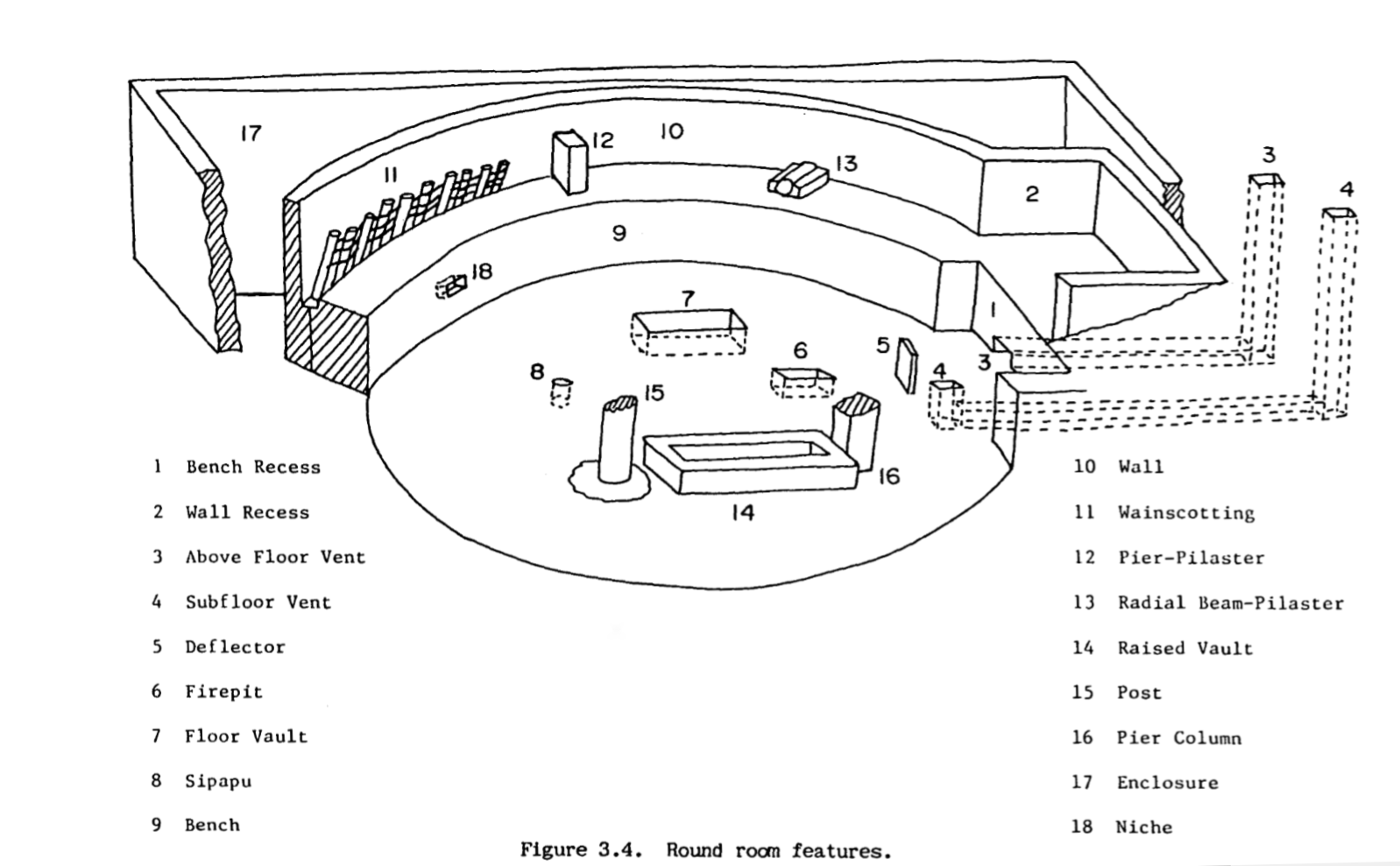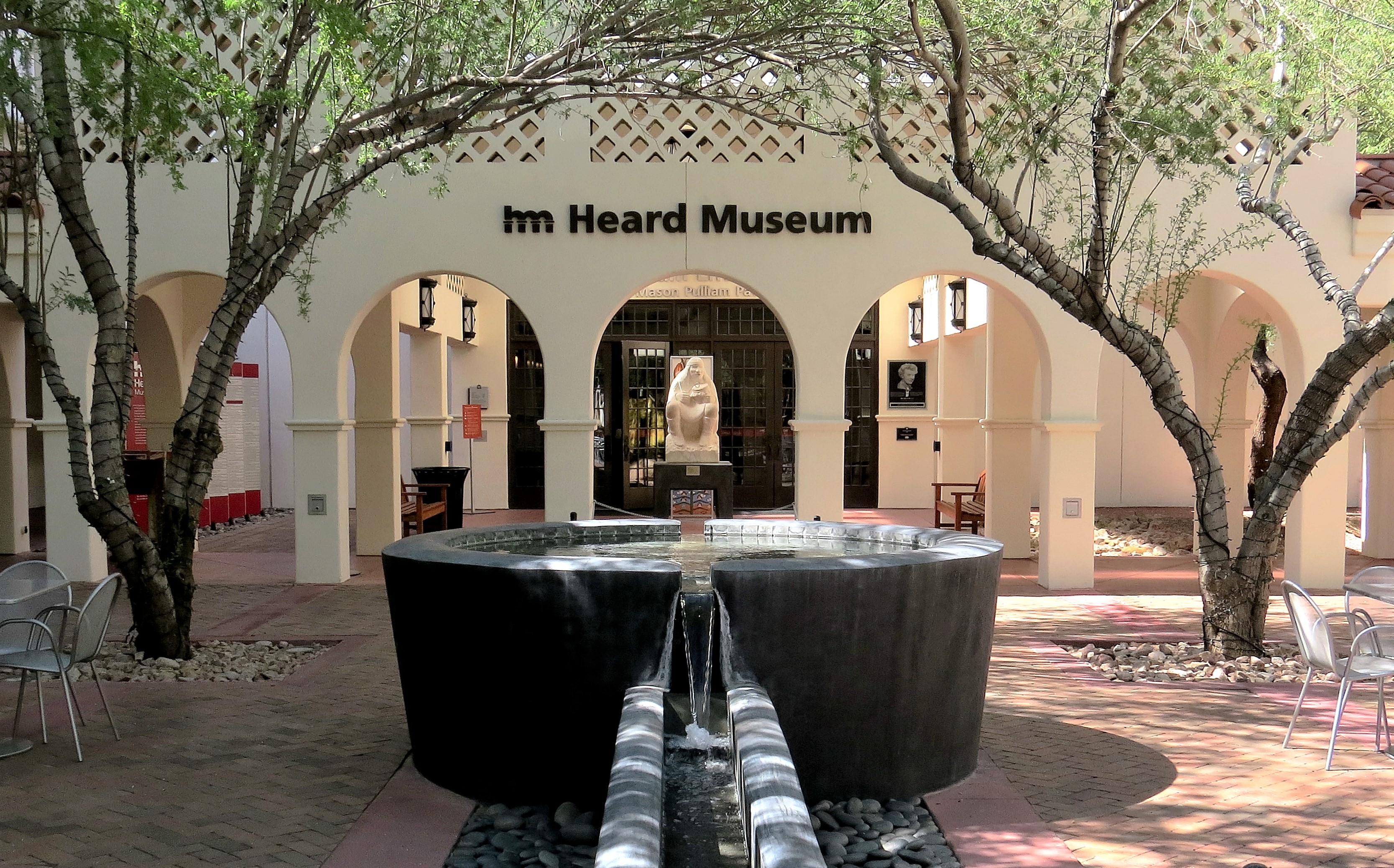|
Ahöla
Ahöla, also known as Ahul, is a spirit being, a kachina, embodied by a man, in Hopi religion. Ahöla is one of the important chief katsinam for First and Second Mesas because he opens the mid-winter Powamu ceremony, sometimes called the bean planting festival. On the first night of the festival, he performs inside a kiva A kiva is a space used by Puebloans for rites and political meetings, many of them associated with the kachina belief system. Among the modern Hopi and most other Pueblo peoples, "kiva" means a large room that is circular and underground ..., the subterranean, ceremonial space, before going with the Powamu Chief to give prayer feathers to Kachina Spring at dawn. Afterwards, Ahöla and the Powamu Chief visit all of the kivas and ceremonial houses, giving out bean and corn plants and marking the doorways with stripes of cornmeal. At the end of the ceremony, Ahöla descends to a shrine, bows four times to the sun, and asks for health, happiness, long ... [...More Info...] [...Related Items...] OR: [Wikipedia] [Google] [Baidu] |
Kachina
A kachina (; also katchina, katcina, or katsina; Hopi: ''katsina'' , plural ''katsinim'' ) is a spirit being in the religious beliefs of the Pueblo peoples, Native American cultures located in the south-western part of the United States. In the Pueblo cultures, kachina rites are practiced by the Hopi, Zuni, Hopi-Tewa, and certain Keresan tribes, as well as in most Pueblo tribes in New Mexico. The kachina concept has three different aspects: the supernatural being, the kachina dancers, and kachina dolls (small dolls carved in the likeness of the kachina, that are given only to those who are, or will be responsible for the respectful care and well-being of the doll, such as a mother, wife, or sister). Overview Kachinas are spirits or personifications of things in the real world. These spirits are believed to visit the Hopi villages during the first half of the year. The local pantheon of kachinas varies from pueblo community to community. A kachina can represent anything in t ... [...More Info...] [...Related Items...] OR: [Wikipedia] [Google] [Baidu] |
Hopi Religion
The Hopi maintain a complex religious and mythological tradition stretching back over centuries. However, it is difficult to definitively state what all Hopis as a group believe. Like the oral traditions of many other societies, Hopi mythology is not always told consistently and each Hopi mesa, or even each village, may have its own version of a particular story, but "in essence the variants of the Hopi myth bear marked similarity to one another." It is also not clear that the stories told to non-Hopis, such as anthropologists and ethnographers, represent genuine Hopi beliefs or are merely stories told to the curious while keeping safe the more sacred Hopi teachings. As folklorist Harold Courlander states, "there is a Hopi reticence about discussing matters that could be considered ritual secrets or religion-oriented traditions." In addition, the Hopis have always been willing to assimilate foreign ideas into their cosmology if they are proven effective for such practical nec ... [...More Info...] [...Related Items...] OR: [Wikipedia] [Google] [Baidu] |
First Mesa, Arizona
First Mesa ( Hopi: Wàlpi) is a census-designated place (CDP) in Navajo County, Arizona, United States, on the Hopi Reservation. As of the 2010 census, the CDP population was 1,555, spread among three Hopi villages atop the 5,700-foot (1,740 m) mesa: Hano (or Tegua, Arizona), Sitsomovi (or Sichomovi), and Waalpi (or Walpi). Geography First Mesa is located at (35.834948, -110.378331). According to the United States Census Bureau, the CDP has a total area of . Demographics As of the census of 2000, there were 1,124 people, 294 households, and 251 families residing in the CDP. The population density was . There were 367 housing units at an average density of . The racial makeup of the CDP was 96.1% Native American, 2.9% White, no Black/African American, Asian, or Pacific Islander, 0.2% from other races, and 0.9% from two or more races. 2.5% of the population were Hispanic or Latino of any race. There were 294 households, out of which 43.5% had children under the age of ... [...More Info...] [...Related Items...] OR: [Wikipedia] [Google] [Baidu] |
Kiva
A kiva is a space used by Puebloans for rites and political meetings, many of them associated with the kachina belief system. Among the modern Hopi and most other Pueblo peoples, "kiva" means a large room that is circular and underground, and used for spiritual ceremonies. Similar subterranean rooms are found among ruins in the North-American South-West, indicating uses by the ancient peoples of the region including the ancestral Puebloans, the Mogollon, and the Hohokam. Those used by the ancient Pueblos of the Pueblo I Period and following, designated by the Pecos Classification system developed by archaeologists, were usually round and evolved from simpler pit-houses. For the Ancestral Puebloans, these rooms are believed to have had a variety of functions, including domestic residence along with social and ceremonial purposes. Evolution During the late 8th century, Mesa Verdeans started building square pit structures that archeologists call protokivas. They were ... [...More Info...] [...Related Items...] OR: [Wikipedia] [Google] [Baidu] |
Eototo
Eototo is a Wuya, one of the major kachina deities of the Hopi people and the personification of nature. He is the protagonist of the Powamu ritual. He is a chief and "father" of the katsinas,"Kachina, Eototo." ''Burke Museum.'' Retrieved 22 Jan 2012. second only to Angwusnasomtaka
In Hopi mythology, Angwusnasomtaka, also known as Tümas, is a kachina (a spirit represented by a masked doll). She is a wuya, one of the chief kachinas and is considered the mother of all the hú and all the kachinas. During the Powamu celebr ... . He is similar in many ways to [...More Info...] [...Related Items...] OR: [Wikipedia] [Google] [Baidu] |
Mesa Verde National Park
Mesa Verde National Park is an American national park and UNESCO World Heritage Site located in Montezuma County, Colorado. The park protects some of the best-preserved Ancestral Puebloan archaeological sites in the United States. Established by Congress and President Theodore Roosevelt in 1906, the park occupies near the Four Corners region of the American Southwest. With more than 5,000 sites, including 600 cliff dwellings, it is the largest archaeological preserve in the United States. Mesa Verde (Spanish for "green table", or more specifically "green table mountain") is best known for structures such as Cliff Palace, thought to be the largest cliff dwelling in North America. Starting BC Mesa Verde was seasonally inhabited by a group of nomadic Paleo-Indians known as the Foothills Mountain Complex. The variety of projectile points found in the region indicates they were influenced by surrounding areas, including the Great Basin, the San Juan Basin, and the Rio Grande ... [...More Info...] [...Related Items...] OR: [Wikipedia] [Google] [Baidu] |
Heard Museum
The Heard Museum is a private, not-for-profit museum in Phoenix, Arizona, United States, dedicated to the advancement of American Indian art. It presents the stories of American Indian people from a first-person perspective, as well as exhibitions of traditional and contemporary art by American Indian artists and artists influenced by American Indian art. The Heard Museum collaborates with American Indian artists and tribal communities on providing visitors with a distinctive perspective about the art of Native people, especially those from the Southwest. The Heard Museum's mission is to be "the world's preeminent museum for the presentation, interpretation and advancement of American Indian art, emphasizing its intersection with broader artistic and cultural themes." The main Phoenix location of the Heard Museum has been designated as a Phoenix Point of Pride. The museum operated the Heard Museum West branch in Surprise which closed in 2009. The museum also operated the Heard ... [...More Info...] [...Related Items...] OR: [Wikipedia] [Google] [Baidu] |




